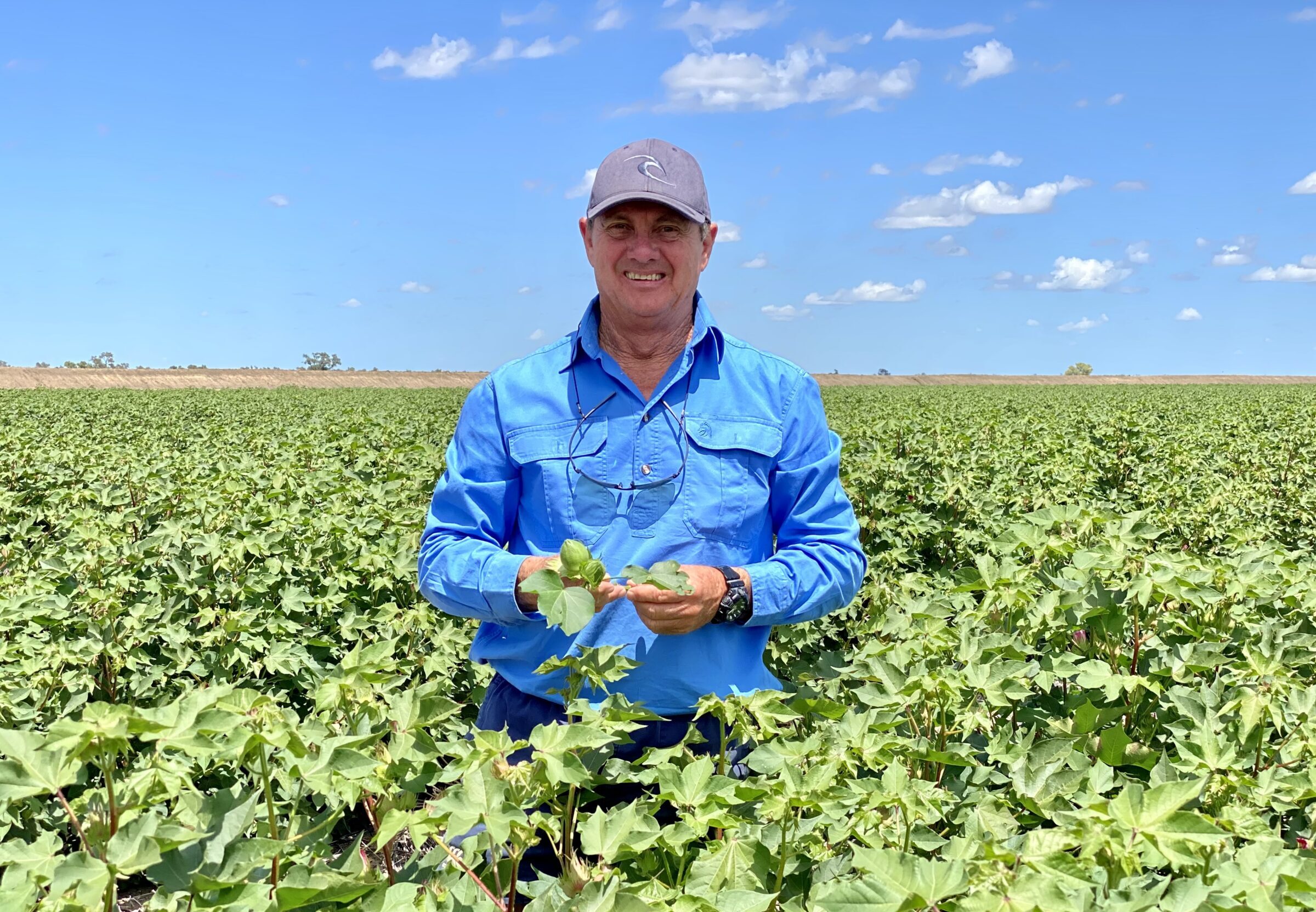Cotton Australia is forecasting the industry’s second-largest crop on record due to favourable conditions across most of Australia’s cotton-growing regions.
After years of devastating drought, CA chief executive officer Adam Kay said the substantial rainfall late last year and early this year has many growers feeling optimistic, and if good conditions continue, a crop of around 5.2 million bales is possible.
In the 2011-12 season, 5.3 million bales were produced making it the best crop on record, said Cotton Australia. If all goes to plan this year, Mr Kay said cotton growers’ contribution to the national economy will be outstanding.
“We are seeing cotton futures trading at more than $700 a bale and with strong global demand for quality cotton combined with low levels for sale in the US and China, the upward pressure on price is expected to continue.”
Mr Kay said the National Farmers Federation was leading the push for agriculture to generate $100 billion in export value.
“Cotton is certainly playing its part in that push, and on current levels, we should double the value of our cotton exports from around $2 billion last year to $4 billion this year,” he said.
“With the industry focused on developing new markets and with cotton-growing emerging in North Queensland, the Northern Territory, and Western Australia, that export value should continue to grow.
“The vast majority of our farmers, around 90 per cent, are family growers and when they have a good year they invest in their farms and spend money in their local community and that’s a massive boost for rural and regional Australia.”
If the predicted bumper cotton harvest happens, it would be a fantastic bounce back from the drought-impacted 2019-20 yield that saw fewer than 590,000 bales produced, the worst result in recent history, according to CA.
Last year’s crop produced 2.8 million bales, thanks to the welcome relief of consistent rainfall in 2020.
Wee Waa agricultural consultant Steve Windress works with farmers across the North West, and he said the region’s summer crops were looking “very promising”.
However, there are still a few months before this season’s leafy green cotton plants grow into fluffy white bolls ready for picking.
And, as everyone in the agricultural game knows – there can be plenty of challenges, uncertainties, weather worries, long nights, and hard work between now and then.
Producing a crop, from seed to picking to market, is no easy feat.
“If it was easy, everyone would be doing it,” said Mr Windress.
“But there’s some good cotton out there.
“We’ve lost a bit of cotton through some of the floodwaters that happened early on in December, but now we’re on track, and there are some very nice crops out there.
“We have unlimited water for irrigated crops, which is an unusual thing for us.
“The crops are set up very well, and potentially, yields look quite good.”
Mr Windress said cotton prices were holding strong.
“I think the cotton price at the moment is probably the second-highest price that I’ve ever seen, and I’ve been in the industry for about 35 years,” he said.
“Only on one other occasion have we seen higher prices, but it was a limited amount of cotton.
“At the moment, the cotton price for this year and for next year is at near-record prices.
“So, there’s a real attraction for cotton at the moment, and yield is paramount; we need to get as much as we can at that better price and keep the profitability there for the growers.”
Mr Windress said the impact of the rain and floods late last year was varied, and every farmer’s experience was different, even on neighbouring properties.
Some farmers weren’t severely affected and had a cracking winter harvest, producing record yields and good quality grain.
However, for others, the wet weather has meant a very delayed harvest or, sadly, the loss of crops, and for some growers, it produced a silver lining in the form of moisture and water for summer crops.
“It depends; if crops were in flood-prone, low-lying areas, then they’re the crops that suffered, but the dryland crops that were protected from floodwater on a bit of higher country did benefit from that rainfall, there’s no doubt,” said Mr Windress.
“There’s dryland sorghum out there that’s probably going to yield as high as some of the irrigated sorghum – it looks magnificent.
“So, it’s a good story for some people, but other people struggle because of the floods.”
Mr Windress said this was the most prolonged winter harvest he’s witnessed.
“We’ve normally finished months ago,” he said.
“Most people have nearly finished, but there’s still a bit of winter crop out there to get, and while the prices are holding up, it’s worthwhile.
“It won’t be long, and we’ll be planting winter crops again in April/May.”
For now, the main focus is on nurturing summer crops.
“For an irrigated crop, I would say no rain from now on in,” said Mr Windress when asked about ideal conditions.
Farmers will continue watering their irrigated cotton in an effort to create the perfect growing environment.
“We’re getting to a stage where we get bol opening and we’re very prone to boll rot, and that’s susceptible in wet weather.
“So, if we can have a dry finish from now on in then, we can maximise quality and yield, and you’d have some happy growers around.
“But I’ll put my other cap on for dryland growers; they need rainfall to finish their crops and maximise their potential.
“So, there’s got to be a happy medium in there somewhere, where that is – I don’t know.”
Cotton Australia shared Mr Windress’ sentiments about the impact of the wet weather being a mixed bag for growers, across the country.
“Some regions haven’t had enough rain and others have suffered severe flooding, but the majority of growing regions have benefitted from warmer temperatures, good rain and manageable pest issues,” said a CA statement.
“It goes to show how diverse our cotton-growing regions are with some farmers separated by thousands of kilometres. But what is clear is that most of Australia’s 1500 (cotton) growers are busy preparing for a good year and hoping they can find staff to help them through to harvest.
“While the yield per hectare can also vary significantly, particularly with dryland and irrigated cotton, some are forecasting 12-14 bales a hectare under irrigation.
“Good results are also expected in dryland areas because of the rain and natural conditions this year.”
Cotton Australia proudly boasts the nation’s cotton as among the best quality sustainable cotton grown anywhere in the world and the 2021 crop sold out despite the soft ban on our cotton from China.
“Many of our farmers have already secured contracts for their 2022 cotton on the futures market and with new market development work funded by the Federal Department of Agriculture under the ATMAC program, we expect to sell every bale we produce again this season,” Mr Kay said.
To order photos from this page click here










